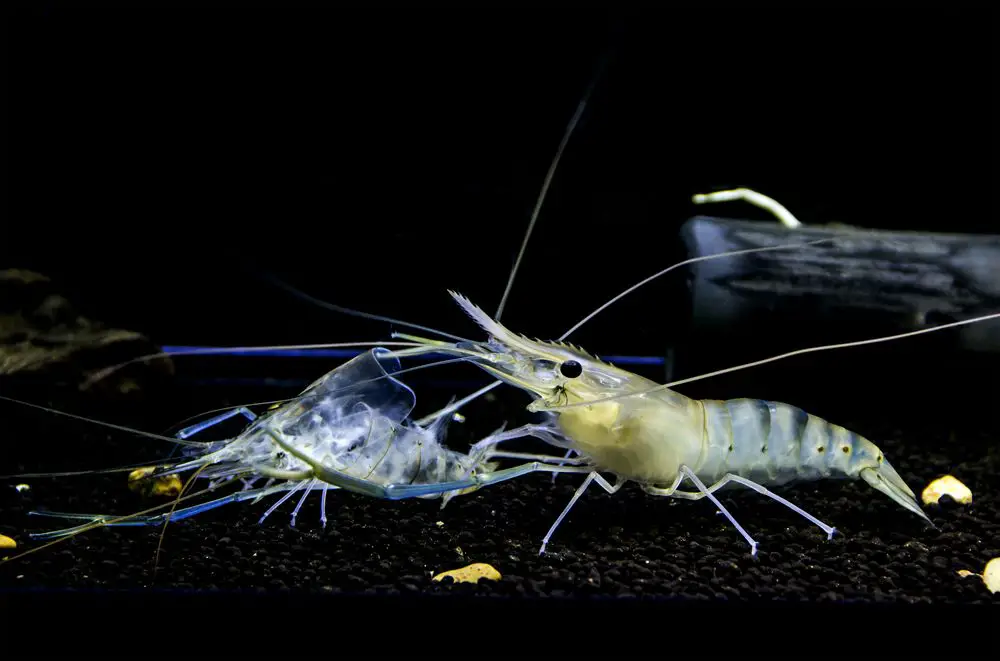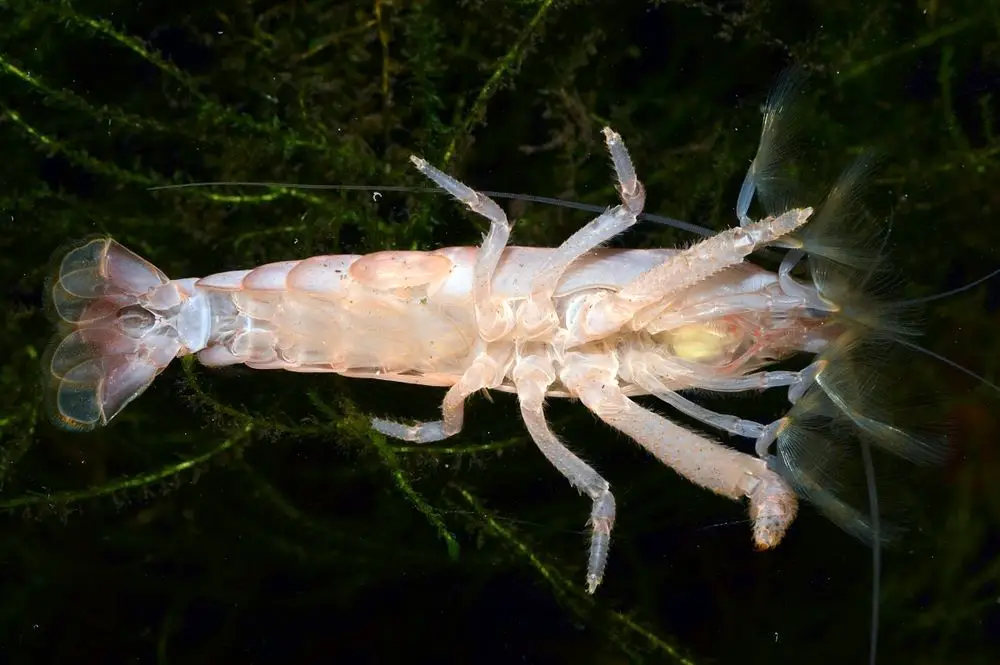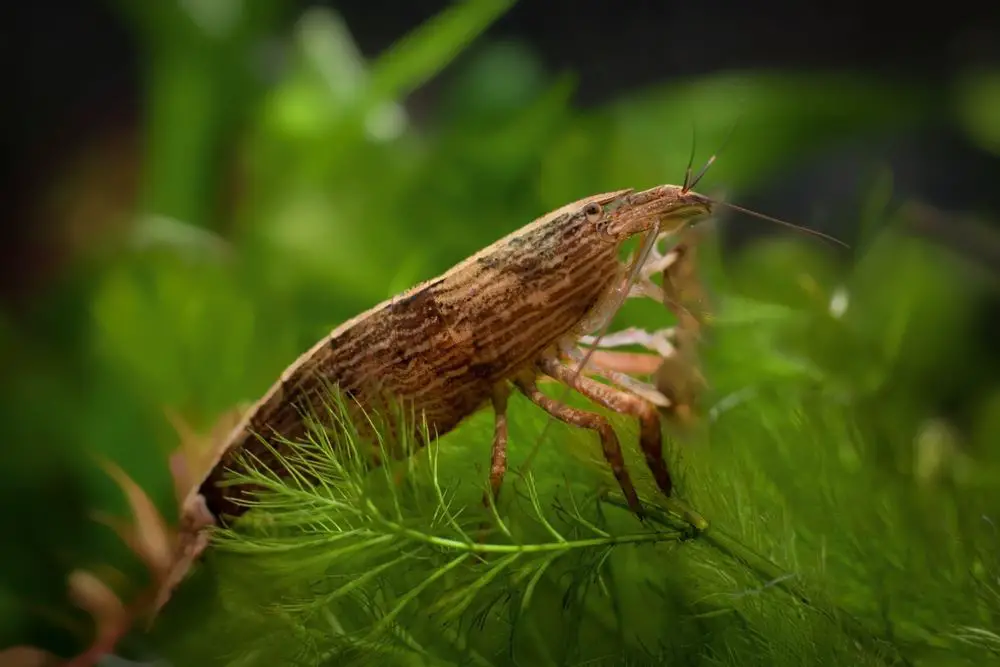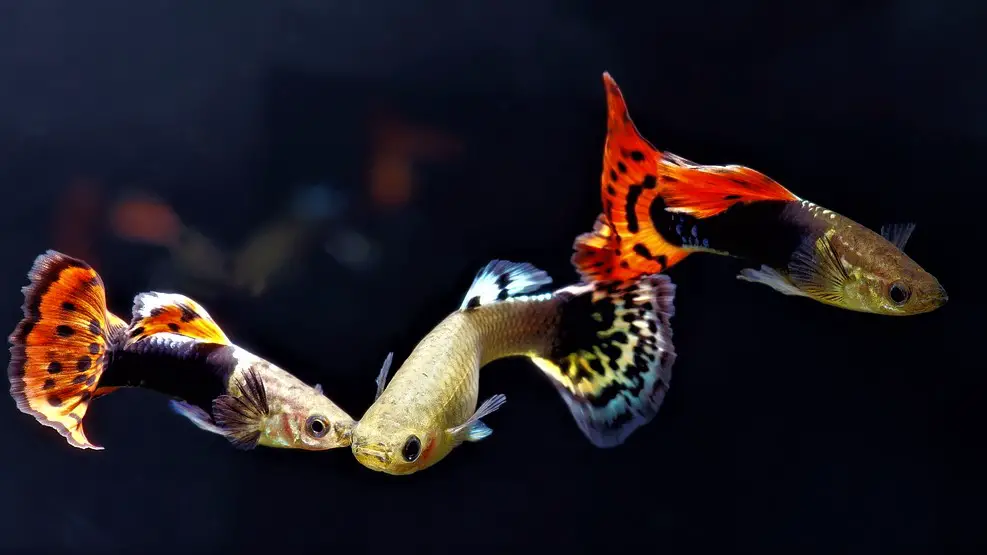Have you ever looked at your aquarium and thought, “I wish I could add something more exotic, something that would truly stand out among my smaller fish?” You’re not alone. Many aquarists find themselves in a similar predicament, wanting to add a unique creature that can coexist peacefully with their smaller fish like neon tetras, guppies, or cherry barbs.
The Largest Freshwater Shrimp You Can Keep with Smaller Fish
The largest freshwater shrimp you can keep with smaller fish are the Macrobrachium rosenbergii (Giant Freshwater Prawn), Atya gabonensis (African Giant Filter Shrimp), Atyopsis moluccensis (Bamboo Shrimp), and Macrobrachium lanchesteri (Asian Glass Shrimp). These shrimp species range in size from 4 to 12 inches and require tanks of at least 20 to 55 gallons. Their care levels vary from moderate to difficult.

A Personal Dive into the World of Giant Freshwater Shrimp
I’ve been an aquarist for over a decade, and I’ve faced my fair share of challenges when it comes to keeping larger shrimp species. One of the biggest hurdles was finding the right tank mates. I remember the first time I introduced a Giant Freshwater Prawn into my community tank.
Within days, I noticed that my smaller fish were stressed and hiding more often. After some research and trial and error, I found that neon tetras and guppies were the most compatible with these larger shrimp. Over the years, I’ve also had to upgrade my tank size and invest in specialized filtration systems to accommodate these fascinating creatures.
Trust me, the journey wasn’t easy, but the reward—a thriving, diverse aquarium—is well worth it. In this article, we’ll delve into the specifics of each of these giant shrimp species, their care requirements, and how to make them a harmonious part of your aquatic family. So, let’s dive in!

What are the Tank Requirements for Giant Freshwater Shrimp?
When it comes to keeping giant freshwater shrimp, the tank requirements are one of the most crucial aspects to consider for their well-being. Unlike their smaller counterparts, these larger species require a more spacious environment to thrive.
For instance, the Giant Freshwater Prawn (Macrobrachium rosenbergii) needs a tank of at least 55 gallons, preferably larger. This is not just to accommodate their size, which can reach up to 12 inches, but also to provide them with enough room to move around, forage, and establish territories.
The tank’s water parameters are equally important. A stable pH level, generally between 6.5 and 7.5, is essential for their health. Additionally, the water temperature should be maintained between 72 and 82 degrees Fahrenheit.
It’s advisable to invest in a high-quality filtration system, as these shrimp produce more waste compared to smaller species. A canister filter or a sponge filter with adequate flow rate can be a good choice.
with adequate flow rate can be a good choice.
Substrate and decorations also play a role in the tank setup. A sandy or fine gravel substrate is often recommended as it allows the shrimp to dig and forage. Decorations like driftwood, rocks, and plants not only add aesthetic value but also provide hiding spots, which are particularly important for molting shrimp that are more vulnerable during this period.
Lighting is another factor to consider. While these shrimp are not particularly sensitive to light, a moderate lighting setup can help in simulating a natural day-night cycle and promoting plant growth, which in turn benefits the shrimp.
In summary, the tank requirements for giant freshwater shrimp are not just about size but encompass a range of factors including water quality, filtration, substrate, and decorations. Proper planning and setup are key to creating a conducive environment for these fascinating aquatic creatures.

How Do You Care for Large Freshwater Shrimp?
Caring for large freshwater shrimp involves a multi-faceted approach that goes beyond just feeding them and maintaining their tank. One of the first things to consider is their diet. Unlike smaller shrimp species that can subsist on algae and detritus, larger shrimp like the African Giant Filter Shrimp (Atya gabonensis) often require a more varied diet.
This can include specialized shrimp pellets, blanched vegetables, and even small portions of protein like brine shrimp or bloodworms. It’s essential to monitor their feeding habits and adjust the diet as needed to ensure they are getting the nutrients they require for growth and molting.
Water quality is another critical aspect of care. Regular water changes, usually about 20-25% every week, can help maintain optimal water conditions. This is especially important for species like the Bamboo Shrimp (Atyopsis moluccensis), which are sensitive to changes in water parameters.

Using a water conditioner to remove chlorine and other harmful substances is advisable, and it’s also beneficial to test the water regularly for ammonia, nitrites, and nitrates to ensure it’s safe for your shrimp.
to remove chlorine and other harmful substances is advisable, and it’s also beneficial to test the water regularly for ammonia, nitrites, and nitrates to ensure it’s safe for your shrimp.
Behavioral observation is also a part of the care routine. Larger shrimp species are often more active and display a range of behaviors, from foraging to territorial disputes. Observing these behaviors can give you insights into their well-being and alert you to any potential issues like disease or stress.
For example, if you notice a shrimp hiding for an extended period, it could be a sign of stress or impending molting, and extra care should be taken to minimize disturbances.
Another aspect that is sometimes overlooked is the molting process. Larger shrimp species will molt less frequently than smaller ones, but when they do, they are more vulnerable to stress and predation. Providing plenty of hiding spots in the form of plants, rocks, or driftwood can offer them the security they need during this critical period.
In essence, caring for large freshwater shrimp is a continuous process that requires attention to their dietary needs, water quality, behavior, and special life stages like molting. Each species has its own set of requirements and challenges, making it essential to tailor your care routine to meet their specific needs.
What Smaller Fish Can Coexist with Giant Freshwater Shrimp?

Finding the right tank mates for your giant freshwater shrimp is a delicate balancing act. The goal is to select smaller fish species that are both non-aggressive and not likely to become a meal for your larger shrimp.
One popular choice is the neon tetra, a small, colorful fish that generally keeps to itself and is too small to pose a threat to adult shrimp. Neon tetras are not only visually appealing but also share similar water parameter requirements with many large shrimp species, making them an excellent choice for a community tank.
Guppies are another suitable option. Known for their vibrant colors and patterns, guppies are peaceful fish that coexist well with shrimp. They are also relatively easy to care for, which is a bonus for aquarists who don’t want to spend too much time on maintenance.
However, it’s essential to keep in mind that guppies breed prolifically, so you’ll need to manage the population to prevent overcrowding, which could stress both the fish and the shrimp.

Cherry barbs are also worth considering. These small, active fish are generally peaceful and can add a splash of color to your aquarium. They are also hardy and adaptable, making them a good choice for both novice and experienced aquarists.
However, like guppies, they can be quite active, so it’s crucial to provide plenty of hiding spots for your shrimp, especially during molting periods when they are more vulnerable.
Another option is the celestial pearl danio, a small and peaceful fish that is less common but equally suitable for a community tank with large shrimp. These fish are not only beautiful but also share similar water requirements with many shrimp species, making them a harmonious addition to the tank.
Choosing the right smaller fish to coexist with your giant freshwater shrimp involves considering several factors, including temperament, size, and environmental needs.
The key is to opt for species that are peaceful, relatively small, and have similar care requirements. This ensures a harmonious living environment where both your shrimp and fish can thrive.
Where Do the Largest Freshwater Shrimp Species Originate From?
Understanding the origins of the largest freshwater shrimp species can provide valuable insights into their natural habitats and care requirements. For instance, the Giant Freshwater Prawn, scientifically known as Macrobrachium rosenbergii, hails from Southeast Asia.
This region is characterized by tropical climates with abundant freshwater bodies like rivers and lakes, which offer the ideal conditions for these shrimp to thrive. The water parameters in their natural habitats often include slightly acidic to neutral pH levels and moderate water temperatures, which can serve as a guide for setting up your aquarium to mimic these conditions.
Similarly, the African Giant Filter Shrimp, or Atya gabonensis, originates from West Africa. These shrimp are typically found in slower-moving waters with plenty of vegetation, which provides both food and hiding spots. The water in these regions is often rich in minerals and has a slightly higher pH, which can be replicated in a home aquarium to provide the shrimp with the most natural living conditions possible.
The Bamboo Shrimp, known scientifically as Atyopsis moluccensis, is another species from Southeast Asia. These shrimp are unique in that they are filter feeders, often found in fast-flowing streams and rivers where they can access a constant supply of microscopic food particles.
Their natural habitat is rich in oxygen and has a stable temperature, which should be considered when setting up an aquarium for these fascinating creatures.
Lastly, the Vampire Shrimp, or Macrobrachium lanchesteri, also originates from Southeast Asia. These shrimp are known for their unique appearance and are generally found in both slow and fast-moving waters. They are highly adaptable and can thrive in a variety of water conditions, making them a somewhat easier species to care for in a home aquarium.
Knowing the geographical origins of these shrimp species can significantly aid in their care. It allows aquarists to replicate the water conditions and environmental factors these shrimp are naturally accustomed to, thereby promoting their health and well-being. Each species comes from a unique habitat that has shaped its behavior, dietary needs, and care requirements, making it essential to consider these factors for successful shrimp keeping.
Conclusion: The Fascinating World of Giant Freshwater Shrimp
In summary, keeping giant freshwater shrimp is a rewarding but challenging endeavor that requires careful planning and attention to detail. From understanding their specific tank requirements to choosing compatible tank mates and providing proper care, each aspect is crucial for their well-being.
Knowing the natural habitats of these fascinating creatures can also offer valuable insights into their care needs. With the right approach, you can create a thriving aquatic environment that both you and your shrimp will enjoy.
If you have any questions or need further guidance, please don’t hesitate to reach out. If you can’t get in touch with me here, check out Aquarium Shrimp Keeping on Facebook for additional resources and community support. Happy Shrimp Keeping!
FAQ Section
Q. How big do freshwater aquarium shrimp get?
A. The size of freshwater aquarium shrimp can vary widely depending on the species. Smaller species like the Cherry Shrimp can grow up to 1.5 inches, while larger species like the Giant Freshwater Prawn can reach sizes of up to 12 inches.
Q. What is the largest giant freshwater prawn?
A. The largest giant freshwater prawn is the Macrobrachium rosenbergii, commonly known as the Giant Freshwater Prawn. This species can grow up to 12 inches in length and requires a tank of at least 55 gallons for proper care.
Q. Are there large freshwater shrimp?
A. Yes, there are several species of large freshwater shrimp that can be kept in aquariums. Some of the most popular ones include the Giant Freshwater Prawn (Macrobrachium rosenbergii), African Giant Filter Shrimp (Atya gabonensis), Bamboo Shrimp (Atyopsis moluccensis), and Vampire Shrimp (Macrobrachium lanchesteri).
Q. How big are freshwater tiger shrimp?
A. Freshwater tiger shrimp, also known as Caridina cantonensis ‘Tiger’, typically grow to a size of around 1 to 1.5 inches. They are smaller compared to the giant freshwater shrimp species and have distinct black stripes, resembling a tiger’s pattern, hence the name.
